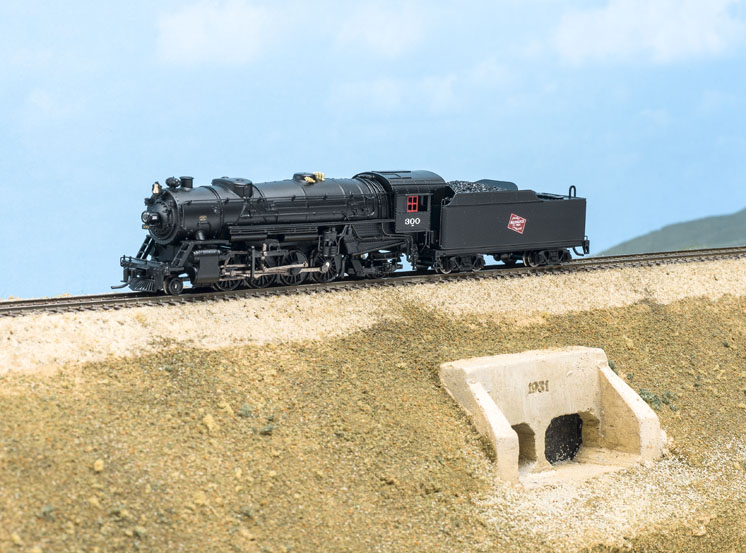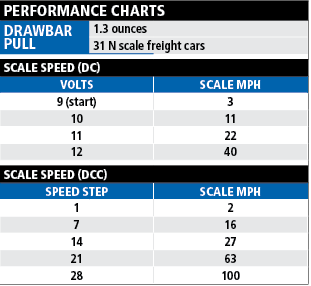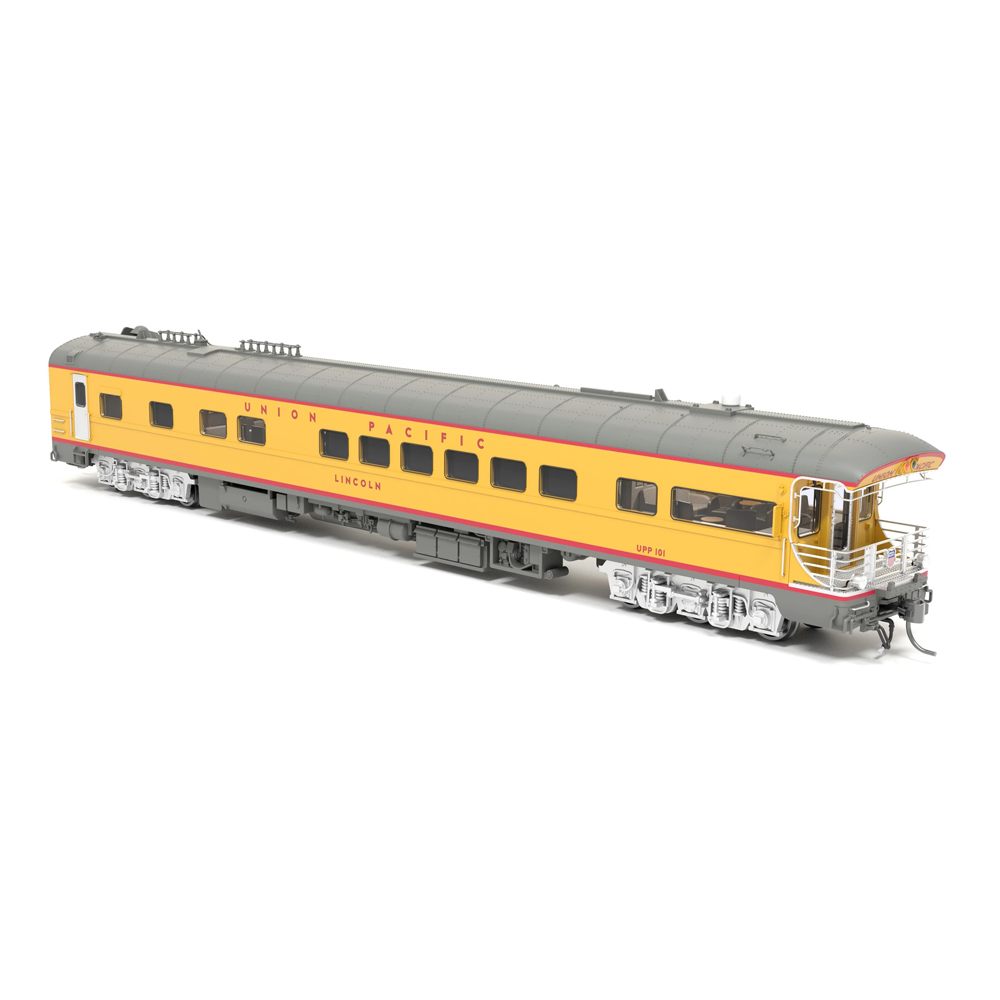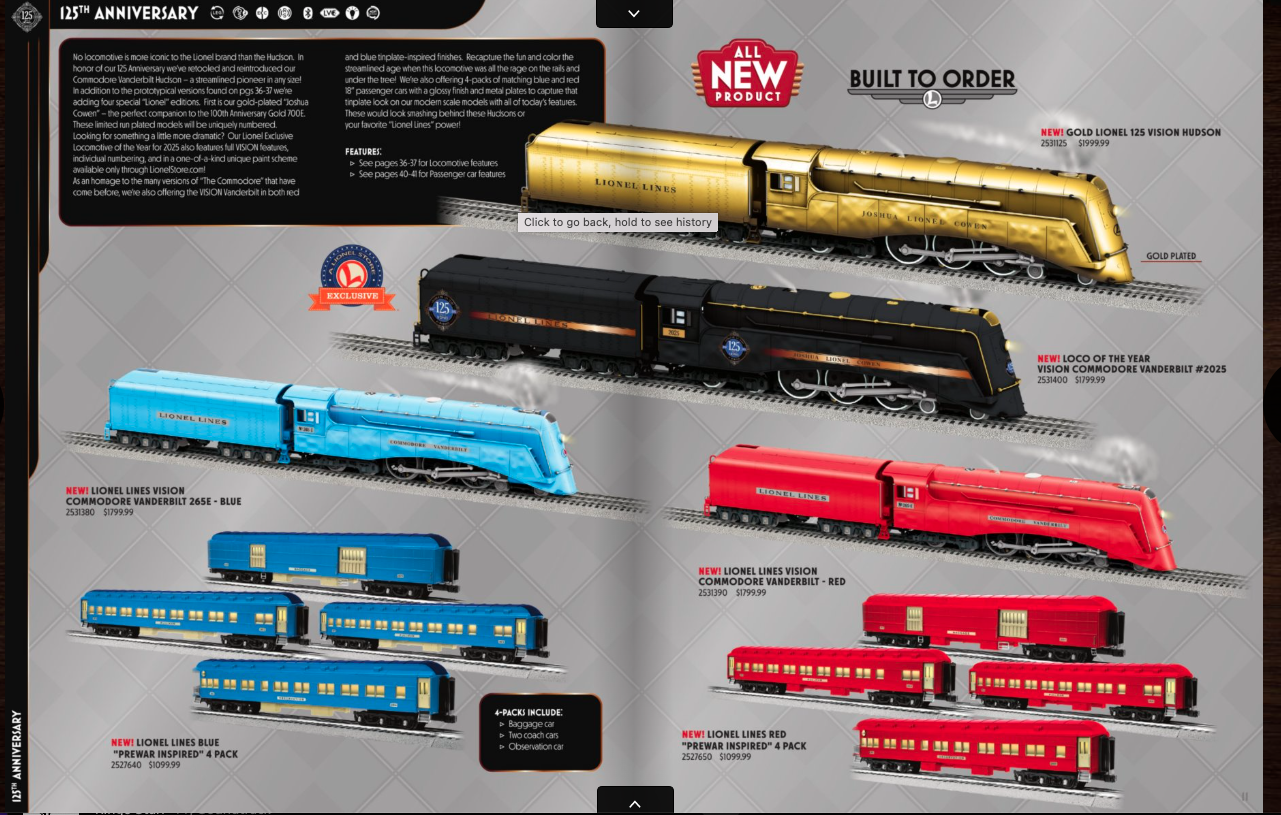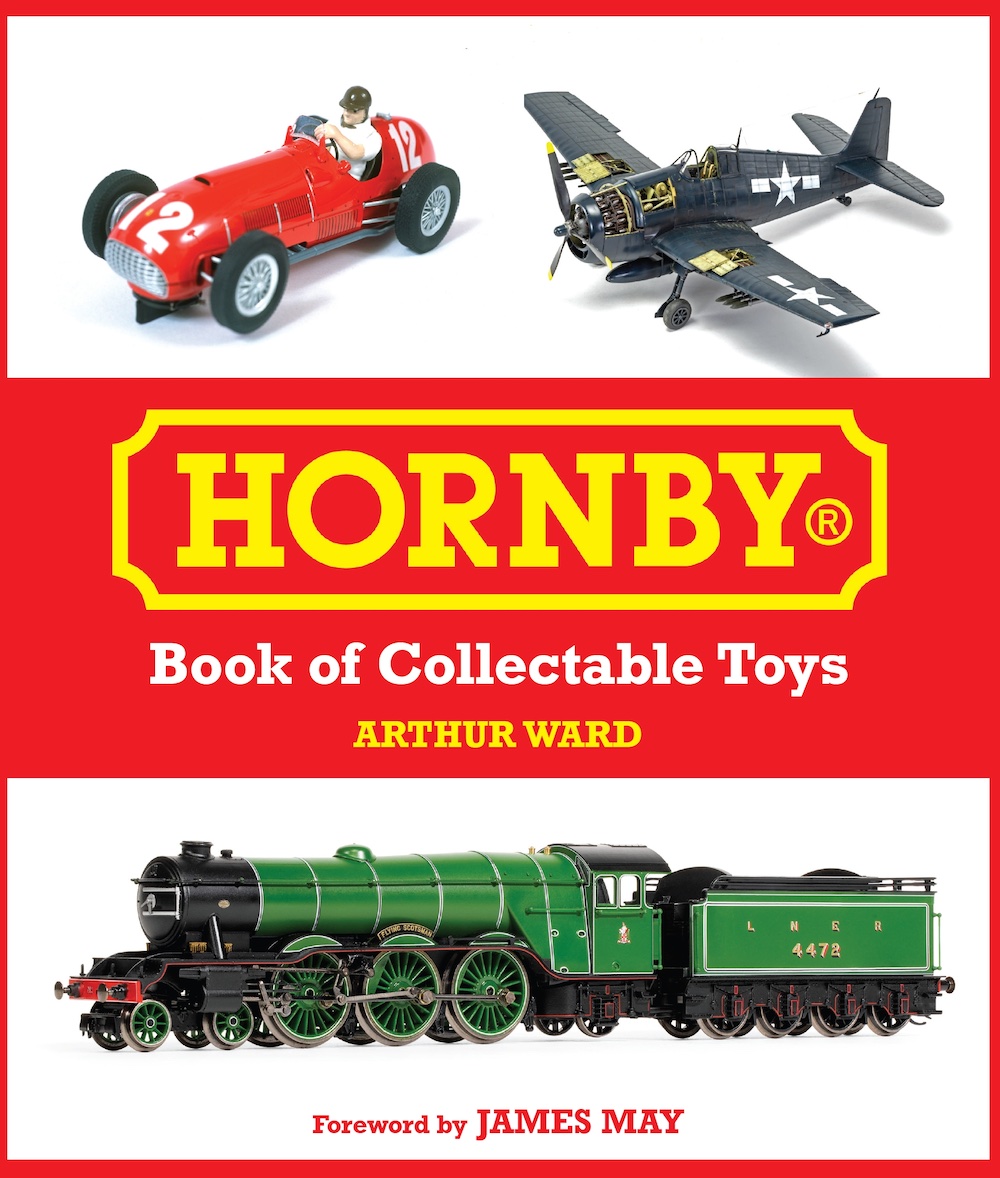For those modeling steam railroading in North America during the first half of the 20th century, having an accurate and reliably running model of a United States Railroad Administration (USRA) Mikado-type 2-8-2 is a necessity. For N scalers, Broadway Limited Imports (BLI) has released an excellent 1:160 model of a USRA 2-8-2 in both light and heavy versions. The Paragon3 series model comes factory-equipped with a dual-mode sound decoder that operates on both Digital Command Control (DCC) and direct-current (DC) layouts and supports the BLI Rolling Thunder subwoofer system.
The prototype and model. The BLI model matches the dimensions of a prototype drawing of an as-built USRA heavy Mikado in the Model Railroader Cyclopedia: Vol. 1, Steam Locomotives (Kalmbach Books). Our review sample is decorated as Chicago, Milwaukee, St. Paul & Pacific RR (Milwaukee Road) no. 300. Originally numbered 8605, the locomotive was one of 100 USRA heavy 2-8-2s built by Alco and delivered to the Milwaukee Road in 1918. The railroad classified the USRA Mikes as L3 (or as L3a or L3b depending on steam pressure and equipment installed). The road had received some 2-8-2s before World War I that made up its L1 and L2 classes. After the USRA disbanded in 1920, the Milwaukee Road purchased additional 2-8-2s built to L2 class specifications.
Many of the L3 class locomotives served until the end of steam on the Milwaukee Road in the mid-1950s.
The model’s die-cast metal boiler and plastic tender feature well-defined molded detail, including boiler bands and rivet seams. Separately applied parts include the whistle, bell, and safety valves. Handrails and piping are also separately applied. Our review sample includes the original USRA-style trailing truck. Some of the Milwaukee Road USRA Mikados, including no. 300, eventually received Delta trailing trucks equipped with boosters.
All paint is smoothly applied, and all lettering is clearly printed, including the road number and L3a classification on the cab sides. The red and white heralds on the sides of the tender are properly placed. The model also features a light-emitting diode (LED) headlight correctly mounted on the smokebox door.
Pulling power. The locomotive by itself weighs 2.4 ounces, 3.4 ounces with the tender. It picks up track power from six drivers and all eight tender wheels. The rear two drivers have traction tires.
In addition to a die-cast metal body, the locomotive has a die-cast metal chassis that houses the Precision Drive Motor. During a drawbar test with our workshop force meter the model generated 1.3 ounces of tractive effort, which is equivalent to 31 free-rolling N scale freight cars on straight and level track.
Running on DCC. I ran the review sample on our DCC test track using an NCE PowerCab system. The Mikado accelerated smoothly from 2 scale mph in speed step 1 to 100 scale mph in speed step 28. This is a bit fast for a heavy 2-8-2, but the top speed is easily lowered by adjusting the top voltage with configuration variable (CV) 5. The exhaust chuffs are synchronized to match the motion of the drivers at the correct four chuffs per wheel revolution.
The model’s user-triggered sound effects include a melodious steam whistle and a hand-rung bell. When starting the locomotive, I could increase the intensity of the chuffs by pressing F5. When drifting downgrade or running light, I could decrease the intensity by pressing F6. There’s also a button controlled brake/brake release, coupler crash, and grade-crossing signal. There are other various crew, radio, and background sounds that I found less useful. All the functions are outlined in the printed instruction sheet.
The Mikado includes the ability to record and play back what BLI refers to as macros. By pressing F27, I could record a sound and operating sequence, then play it back by pressing F26. This would allow you to have a train running on “auto pilot” while you’re actively switching or running a separate train with another locomotive.
Like other BLI Paragon3 locomotives, the USRA heavy Mikado supports the BLI Rolling Thunder system, which uses a subwoofer to capture the deep bass tones of a powerful locomotive. BLI sells the system for $199.99 or $249.99, depending upon the size of the speaker. (Read my review of the Rolling Thunder system in the March 2016 issue.)
I also ran the model on our Canadian Canyons project layout using a Digitrax DCC system, and the model performed without any issues. With its 93⁄4″ minimum radius, the Mikado easily maneuvered the layout’s 13″ radius curves and rolled smoothly through its Peco medium-radius turnouts.
DC performance. In DC, the locomotive required 9V to start moving at 3 scale mph. It accelerated smoothly to 40 scale mph at 12V and 50 scale mph at 14V, our DC power pack’s maximum voltage. To access user-triggered sound effects and to program some CVs in DC mode, BLI sells the DC Master analog sound controller for $49.99.
With or without the Rolling Thunder subwoofer system, this N scale steam locomotive features loud, distortion-free sound that’s on par with its larger HO scale cousins. If you’re in the market for an N scale Mike, be sure to take a look and a listen to the BLI Paragon3 USRA 2-8-2.
Manufacturer
Broadway Limited Imports
9 E. Tower Circle
Ormond Beach, FL 32174
www.broadway-limited.com
Era: 1918 to 1950s
Road names (two road numbers each)
Heavy Mikado: Chicago, Milwaukee, St. Paul & Pacific; Atchison, Topeka & Santa Fe Ry.; Chicago, Burlington & Quincy; Erie; Great Northern; and New York Central (Pittsburgh & Lake Erie).
Light Mikado: Baltimore & Ohio, Canadian National, New York Central (Indiana Harbor Belt), Pennsylvania RR, Southern Ry., and Union Pacific.
Painted black and graphite but unlettered versions available.
Features
• Blackened metal wheelsets, in gauge
• Brass whistle and valve details
• Die-cast metal body and chassis
• Electrical pickup on six drivers and all tender wheels
• Flywheel-equipped can motor geared to first and fourth axles; side rods transfer power to other drivers
• Golden-white light-emitting diode (LED) headlight
• Magne-Matic couplers front and rear, at correct height
• Operates on codes 55, 70, and 80 rail
• Paragon3 dual-mode sound decoder supports Rolling Thunder system
• Recommended minimum radius 93⁄4″
• Traction tires on two rear drivers
• Weight: 3.4 ounces (engine and tender), 2.4 ounces (engine alone)
• Wire grab irons and other detail parts





